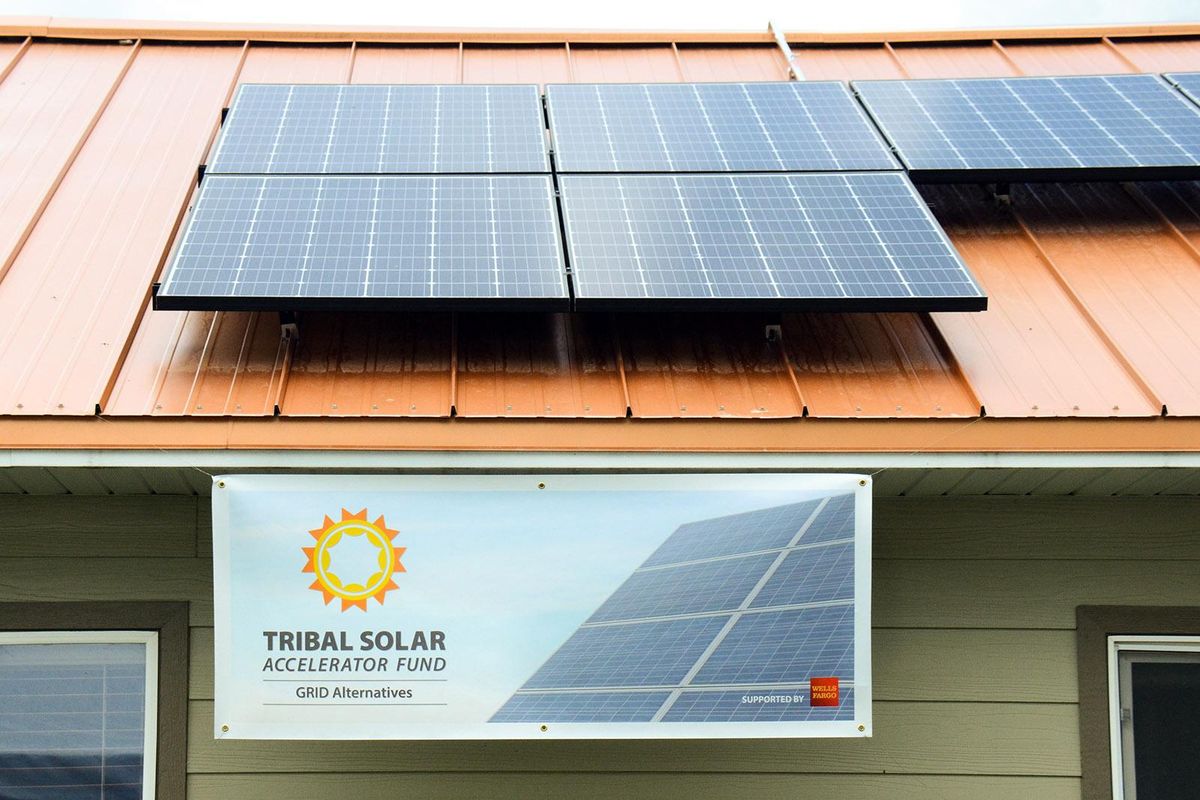Solar celebration hosted by Spokane Tribe

In 2016, the the Cayuse Mountain Fire burned upwards of 18,000 acres, much of it on the Spokane Indian Reservation.
The blaze, which destroyed 14 tribal homes, cut power and water service to the much of area. It was a wake-up call to tribal officials about the need to generate their own energy.
Earlier this month, the tribe held a “Solar Celebration” to celebrate its $2 million Children of the Sun Solar Initiative, which is bringing solar power to the reservation. A sizable crowd arrived with representatives from other tribes, plus others representing the Spokane Indian Housing Authority, the Tribal Solar Accelerator Fund and other agencies.
Agencies and companies partnering with the tribe include the Department of Energy, Sun Vest, the Tribal Solar Accelerator Fund, and the U.S. Department of Housing and Urban Development’s Office of Native American Programs.
Carol Evans, chairwoman for the Spokane Tribal Business Council, welcomed all visitors “to our homeland” and explained the importance of the water and air and sun. “That’s what we’re trying to bring back. That’s what our ancestors did. That means a lot. They honored the earth, the air, the whole environment.”
Timothy Horan, executive director for Indian Housing Authority, followed Evans at the podium and detailed that 2016 fire.
“It jumped the Spokane River and came on to the Spokane Reservation and caused a horrible conflagration,” Horan said. “We ended up losing family homes but no loss of life or serious injuries. It was a lot of hard work and a moment of awakening as to how vulnerable we were.”
Eighty power poles on the transmission line bringing power onto the Spokane Reservation were burned.
We were without power and with no power we could not operate our tribal administration, could not operate the tribal housing authority,” Horan said. “We were without water because the fire cut power to the pumps. We had no independent source of water. It was a moment of awakening as to how vulnerable we were.”
So the tribe worked with multiple agencies to bring a source of energy to the the reservation with the enventual goal of energy independence. Money for the solar project comes from a $1 million grant from the U.S. Department of Energy, nearly $500,000 in contributions from Wells Fargo & Co. and $500,000 from Solar Investors of Wisconsin, which is getting tax credits for participating in the financing.
“It’s better than two years in the making and gave us the opportunity to bring this solar technology to the Children of the Sun and put it on our rooftops, power our buildings, and look for a way where ultimately we could be self-sufficient, self-reliant with energy sovereignty,” Horan said. “If you want to know what energy sovereignty looks like, look on our roof tops. That’s what we’re doing here. Installation of 650 killowatts of solar is underway or already finished for 29 homes and nine tribal buildings.”
It’s estimated that the 650 killowatts of solar capacity would lead to a savings of $2.8 million over 35 years.
The tribe also has stressed the project’s benefits to slow climate change. The annual greenhouse gas emmission savings from the project are estimated to be about the same as consuming 60,000 gallons of gasoline.
“The people are connected to the land and it’s kind of a full circle thing for us,” Evans said. “We’re going back and getting energy from the sun and that’s important for us. It brings a lot of entities together to work together to complete the project.”